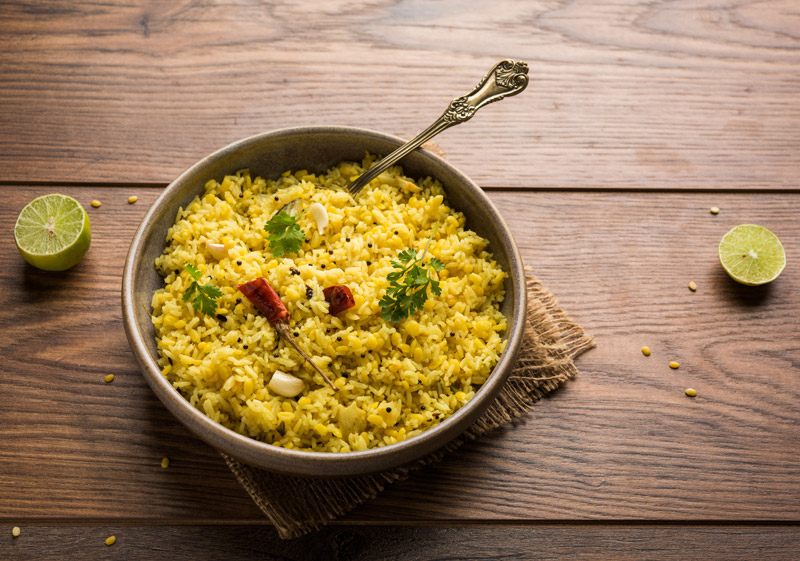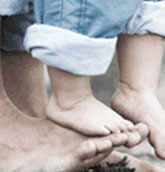4 mins December 31, 2019
It’s just comfort food made of rice and daal, or lentils here in India, but this simple preparation has captured the hearts and palates of travellers who have visited India across the ages. Most commonly called khichdi in India, it goes
by the Anglicised ‘kedgeree’ in England and the exotic-sounding ‘kushari’ in – believe it or not – Egypt.

Khichdi is assumed to have been invented as a way of using the day’s leftovers in home kitchens, but that is probably not true. This hearty rice-and-lentil preparation is old as time itself. Lord Krishna was a fan and, according to the Mahabharata,
Draupadi fed it to the Pandavas when they were in exile.
Ancient texts often refer to preparations of rice and pulses, and Chanakya, prime minister of Emperor Chandragupta Maurya, thought khichdi was an excellent example of a balanced meal, in the 2nd century BCE.
The dish continued to make waves in medieval times, and legendary Moroccan traveller Ibn Battuta, who visited India in the 14th century CE, mentions a preparation of moong being boiled with rice and eaten after adding ghee. Russian merchant and
traveller, Afanasy Nikitin, one of the first Europeans to travel to India, too was quite taken by the dish. Nikitin, who visited India in 1469, writes in his travelogue titled Khozheniye za tri morya (The Journey Beyond Three Seas) about how
horses “were fed pulses and khichri, an Indian dish of rice, with sugar and ghee".
During the 1600s, French traveller Jean-Baptiste Tavernier came to India six times and observed khichdi being prepared with green lentils, rice and clarified butter (ghee). He referred to it as a “peasant’s evening meal”.
The Mughals gave this delicious ‘peasant’s dish’ a royal twist and, under their patronage, khichdi made its way to imperial menus. Emperors Akbar, Jahangir and Aurangzeb fell love with this rice-dal preparation, which was, of
course, tweaked to suit royal tastes.
But it was from the British barracks that this Indian staple of rice and lentils journeyed overseas. Lingering on the palates of British soldiers and army officers long after they had left India, khichdi inspired the Anglo-Indian kedgeree, a non-vegetarian
version of khichdi, which is still very popular in the UK.
Food historian Lizzie Collingham in her book Curry: A Tale of Cooks and Conquerors, writes, “The Anglo-Indians had already added onions, fish and hard-boiled eggs to the rice-and-lentil dish. Now the aristocracy, who served kedgeree for
breakfast during their country-house weekends, settled on smoked haddock as the definitive fish to add to the rice, and almost invariably abandoned the lentils.”
But how did khichdi become a part of Egyptian cuisine? Found on street stalls as well as in home kitchens, the Egyptian version is called ‘kushari’ or ‘koshary’, and consists of rice, lentils, chickpeas and pasta. These
elements are cooked individually, then tossed together and topped with different condiments and a peppery hot sauce called shatta.
According to The Oxford Companion To Food, kushari actually “came to Egypt in the haversacks of British soldiers who had eaten it in India as khichri”. The British occupation troops in India had found this dish to be inexpensive, safe
and very filling, and had it prepared it Egypt for them during World War II.
That’s quite a journey for this humble meal but, clearly, it was meant to be a traveller. So, if you’ve enjoyed reading this story and you’re ever in Egypt or England, add kedgeree and kushari to your itinerary. Use Axis Bank’s
Forex Card for all your money needs while travelling overseas. It offers transactions in 16 different currencies and is a safe and convenient way to carry money. Use it at merchant establishments,
for online payments etc. Furthermore, Axis Bank account holders can enjoy a 30 paise discount on exchange rates while reloading the card!
Disclaimer : This article has been authored by Live History India Digital, a Mumbai based Digital Content Company. Axis Bank doesn’t influence any views of the author in any way. Axis Bank & Live History India Digital shall not be responsible for any direct / indirect loss or liability incurred by the reader for taking any financial decisions based on the contents and information. Please consult your financial advisor before making any financial decision.


















